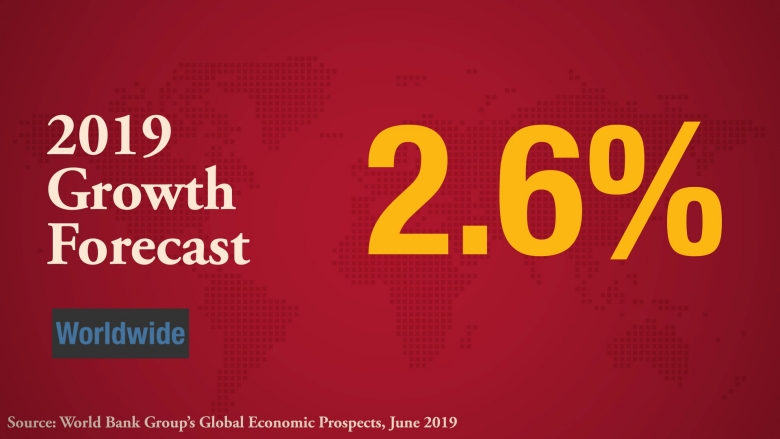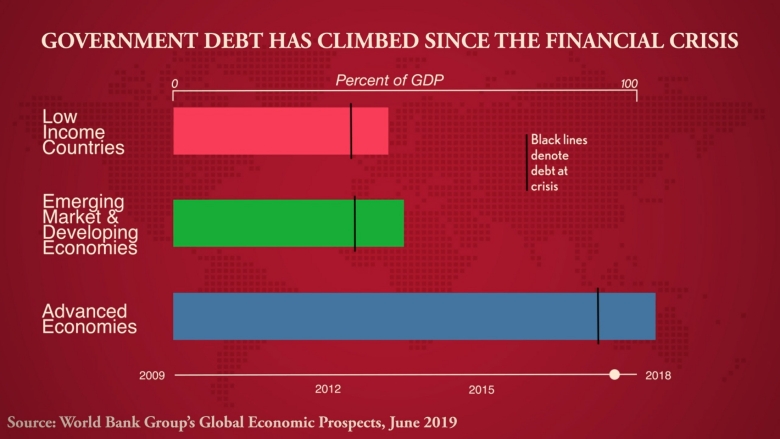A shipyard at sunrise. © Travel mania/Shutterstock
It is on track to stabilize, but its momentum is fragile and subject to substantial risks.
International trade and investment have been weaker than expected at the start of the year, and economic activity in major advanced economies, particularly the Euro Area, and some large emerging market and developing economies has been softer than previously anticipated.
, the World Bank’s June 2019 Global Economic Prospects: Heightened Tensions, Subdued Investment reports.

A number of risks could disrupt that delicate momentum: a further escalation of trade disputes between the world’s largest economies, renewed financial turmoil in emerging and developing economies, or a more abrupt deceleration of economic growth among major economies than is currently envisioned.
Of particular concern is a slowdown in global trade growth to the lowest level since the financial crisis ten years ago and a tumble in business confidence.
“Current economic momentum remains weak, while heightened debt levels and subdued investment growth in developing economies are holding countries back from achieving their potential. It is urgent that countries make significant structural reforms that improve the business climate and attract investment. They also need to make debt management and transparency a high priority so that new debt adds to growth and investment.”
, the report cautions.
Economic policymakers and their constituents face multiple critical issues to sustain momentum in this fragile environment. This edition of the GEP examines several of them:
The GEP provides intelligence in support of achieving development goals and is a trusted resource for member countries, stakeholders, civil organizations and researchers.
Emerging and developing economy debt has climbed by an average of 15 percentage points to 51 percent of GDP in 2018.

Debt accumulation can be justified because of the need for growth-enhancing projects, such as investments in infrastructure, health and education. And indeed, the needs are massive: In addition, prudent government spending can help a country ride out an economic downturn.
But excessive debt carries serious risks. Even in an environment of low interest rates, debt can accumulate to unsustainable levels. A government spending large amounts to service debt is allocating less on other important activities. High debt also raises the possibility in the minds of investors and consumers that governments may eventually raise taxes to rein in deficits, chilling business and consumer spending.
Those with sound balance sheets may find that borrowing to boost growth is appropriate.
Those that do borrow would benefit from better debt management and greater debt transparency.

Despite a recent modest pickup, investment growth is expected to be below long-term averages in coming years.
This means that the progress emerging and developing economies had made in catching up to advanced economies is slowing. Slower capital deepening also exerts a drag on the productivity of a country. This too stirs worry about filling gaping development needs over the next decade.
Reallocating resources from unproductive areas and increasing spending efficiency are ways to boost public investment. Removing business constraints, addressing market inefficiencies and weak corporate governance are strategies to promote private investment. Authorities can provide greater clarity about the direction of policy and seek enhanced integration into global value chains. Commodity exporting economies can seek greater diversification as a means of reducing vulnerability to the volatility of natural resource markets.
A further troubling aspect of the tepid economic pace is what it means for the poorest economies. But what are the prospects for those countries that are still classified as low-income, based on having a per capita income of $995 or less in 2017?
However, the challenges to the remaining low-income countries are steeper than for those that have moved up.
And most of them are geographically disadvantaged by being isolated or landlocked, making trade integration tougher.
Add to this that many are heavily reliant on agriculture, putting them at greater vulnerability to extreme weather and less able to join global value chains; that prospects for commodity demand are softening as growth in major economies slows; and that debt vulnerabilities have climbed sharply. All of this makes the prospects for progress appear daunting.
Domestically, developing stronger financial systems and promoting financial inclusion and strengthening governance and business climates to support the private sector can help.